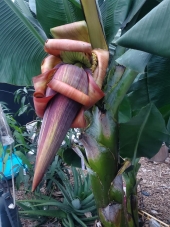Yip, it gets reeaally complicated. Nature's not in the business of simple, that's for sure!
John Saltveit wrote:Whip and tongue, bark, cleft grafting is done in late winter and early spring from dormant new branches.
Bud grafting or just called budding, happens in the summer (august and september mostly).
I've been wanting to learn grafting for ages, and basically just never got around to it.
I've always been told that bud grafting is a great 'beginner' technique.
That's not much use to you, as it'd be nearly a year until budding season comes around

If you're in an area with grafting workshops, I think it'd be well worth going;
there'd sure to be all sorts of learning opportunities aside from just grafting.
Jon La Foy wrote:can you actually cut a small branch off then root it?
As John says-it depends. What plant(s) are you thinking about growing from cuttings?
I haven't heard of people rooting cuttings from fruit
trees, which are generally grown from pip/stone or grafted onto rootstock.
People here may have.
These are easy though:
Berries like blueberries, gooseberries, currants etc
Grapes
Figs
Also: if you plant seeds from an apple, fruit from the new tree will probably be very different-that doesn't mean not good though.
this thread goes on about it at length!
Stones from fruit like peaches usually grow a new plant that's pretty much the same as it's 'parent'.







